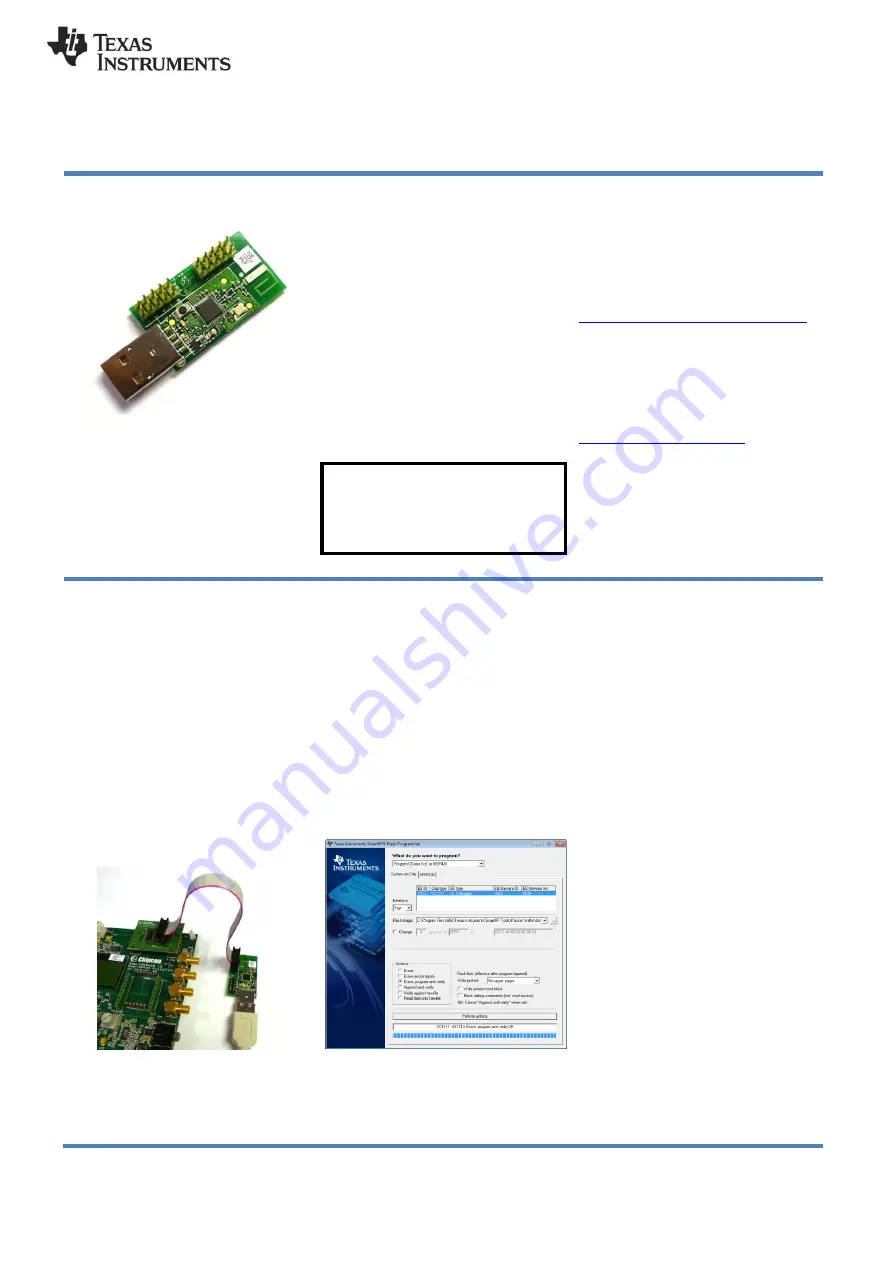
SWRU328
December 2012
CC1111 USB Evaluation Kit 868/915 MHz Quick Start Guide
1. Kit Contents
1 x CC1111 USB Dongle
(CC1111Dongle-868)
This Quick Start Guide
The hardware in this kit is FCC and
IC certified and complies with
ETSI/R&TTE requirements over
temperature from 0 to +35°C.
2. Getting Started
The CC1111 USB Dongle can be
used as a development platform for
USB and RF applications.
An external development board or
debugger, like the CC Debugger,
SmartRF04EB or SmartRF05EB, is
required to program and debug
software running on the CC1111.
Note that the CC1111 USB Dongle
is pre-programmed with the packet
sniffer firmware.
This Quick Start Guide will
describe how to use the dongle
with the packet sniffer and what
would be the next steps for
developing your own software.
3. Preparations
Before
proceeding,
please
download and install the following
tools:
SmartRF Flash Programmer
www.ti.com/tool/flash-programmer
You will need this tool to program
the packet capture firmware on the
CC1111 USB dongle
SmartRF Packet Sniffer
This is the PC tool that displays
and parses the packets received by
the capture device.
4. Programming the Dongle
For the USB dongle to operate as a
packet capture device, it must be
programmed with the packet sniffer
firmware. By default, the dongle
comes pre-programmed with this
firmware.
Connect the USB dongle to the
debugger or the development
board with an appropriate 10 pin
flat cable. The dongle must also be
powered via the USB bus. Refer to
picture below for an example.
Caution!
Avoid using other power
sources for the dongle than a
regular USB voltage source at max
5.5V, 500 mA.
5. Programming the Dongle
Launch
the
SmartRF
Flash
Programmer and make sure you
select the “System-on-Chip” tab.
The tool should show a line with
CC1111
connected
to
a
SmartRF04EB.
Next, locate the flash image
sniffer_fw_ccxx11.hex
in
“C:\Program Files\Texas Instruments\SmartRF
Tools\Packet Sniffer\bin\general\f
irmware”
Select “Erase, program and verify”
and press the “Perform Actions”
button.
6. Install USB Driver
After programming the device,
disconnect the dongle from the
programming board and plug it into
the PC.
Windows’ new hardware
wizard will appear.
Select the options for automatic
installation and wait for the driver
installation to complete. If the
Wizard asks for a specific driver,
point it to the cebal2.inf file located
in
“C:\Program Files\Texas Instruments\SmartRF
Tools\Drivers\cebal\win_<arch-specific>\
”
After installation of the driver, the
Packet Sniffer capture device is
ready for use.






